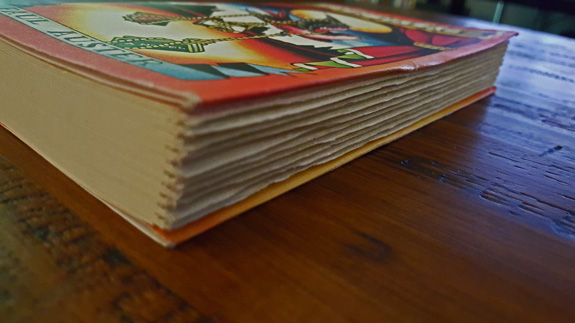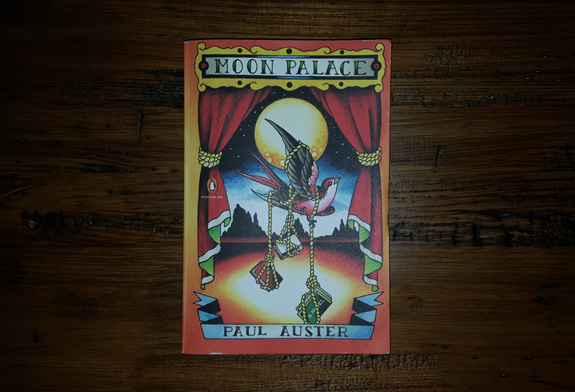Publishers put lots of focus on book covers in order to grab the attention of readers, but there’s a far better way to basically guarantee I pick up your book: deckle edge pages.
Granted, they have nothing to do with the words printed on the pages themselves, but for some reason the deckle design instantly makes me feel positive.
At a bookstore in D.C. earlier this year I stood in front of the section for one of my favorite authors, Paul Auster, trying to decide which of his works to tackle next. They had about eight of his novels, but the only one with deckle edges made the decision no contest.
“Moon Palace” was not my favorite Auster work, but I did enjoy the story of M.S. Fogg’s experience sabotaging and rebuilding his life through adventures accompanied and inspired by a somewhat crazy old man.
Auster always has great detail that shows how much research he puts into his settings. Fogg has an uncle named Victor who plays the clarinet and is in a few different bands during his life. Fogg talks about one iteration, called the Moon Men, dropping a reference that is not about a singer named Taylor, yet in a modern reading actually kind of fits.
“There was no question they had put together an original act, and when I went to see them perform the next night, the songs struck me as a revelation — filled with humor and spirit, a boisterous form of mayhem that mocked everything from politics to love. Victor’s lyrics had a jaunty, dittylike flavor to them, but the underlying tone was almost Swiftian in its effect.”
Apologies to Jonathan, but Swiftian is only going in one direction in terms of cultural understanding, and it’s not back toward the 18th century.
In terms of aphorisms and general wisdom, Uncle Victor is second only to the old man named Thomas Effing, for whom Fogg works in the second half of the book. Victor is largely responsible for raising Fogg and clearly has a desire to impart as much as he can on the kid. That includes wonderful baseball analogies.
“As Uncle Victor had once told me long ago, a conversation is like having a catch with someone. A good partner tosses the ball directly into your glove, making it almost impossible for you to miss it; when he is on the receiving end, he catches everything sent his way, even the most errant and incompetent throws.”
While working for Effing, Fogg is sent on a journey to a museum, which Effing notes was designed by Stanford White, who also designed the buildings at Fogg’s university and was involved in a salacious and true story involving a girl and a murder at Madison Square Garden.
Effing also talks about Thomas Moran, who he says helped talk him into a trip out west that plays a big part in the story. I flagged this page because I was vaguely sure Moran had feature pieces in what I consider the coolest room in Washington. A quick search confirmed that yes, his works are part of the second floor salon at the Renwick Gallery across the street from the White House. Sadly they are majorly changing the room during a renovation, but wouldn’t it be an amazing place to play whiffle ball?
My final note on this book is one of pure coincidence. I do the bulk of my reading on the train to work, and one night before heading out I was watching The Simpsons during dinner. In the episode, Lisa is invited to join Mensa and told to go to an address on Euclid Street.
Then half an hour later in “Moon Palace” Fogg says about Effing, “Every morning he would test himself by walking down Euclid Avenue at rush hour…”

